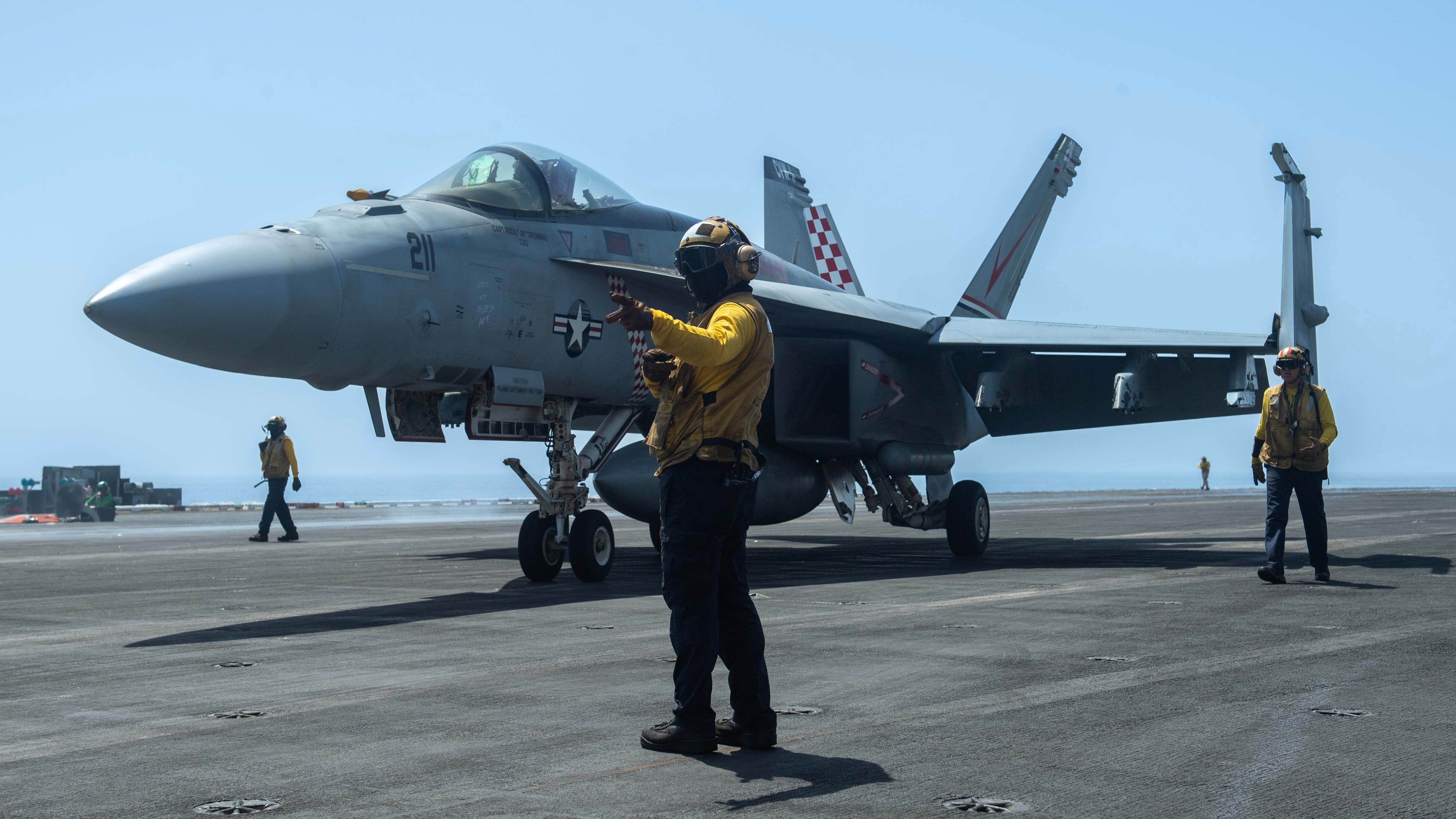NATIONAL HARBOR, Md. — The Navy’s upcoming sixth-generation fighter may be its last manned fighter, the director of the service’s air warfare division said Tuesday.
F/A-XX will include new capabilities and technologies, such as artificial intelligence and machine learning, Rear Adm. Michael Donnelly said at the Navy League’s Sea Air Space conference. The upgrades will provide more battlespace awareness and improve how naval aviators make decisions.
Those technological advancements could help bring the Navy into a new era where piloted and unmanned aircraft operate more closely together, such as with the Navy’s planned AI-operated drone wingmen, known as collaborative combat aircraft, or larger, unmanned platforms that might come in the future.
“It could be our last tactical manned fighter that we operate out of the Navy,” Donnelly said. “It will actually be at a point where we are more man-on-the-loop than man-in-the-loop, and be the bridge to fully integrating towards the hybrid air wing [combining crewed and uncrewed platforms] in the future, in the 2040s.”
Donnelly said the F/A-XX will allow the Navy to operate in contested environments and outmatch adversaries in ways that surpass the Navy’s current fighters.
“We do that today, but we do it at parity because of the capabilities we have fielded today,” Donnelly said. “So F/A-XX is going to be that next improvement.”
Navy officials would not say when an announcement on F/A-XX would be made, but it could come soon. The Air Force’s counterpart to the Navy’s F/A-XX — the Boeing-made F-47 Next Generation Air Dominance fighter — was announced by President Donald Trump in an Oval Office event March 21. Breaking Defense reported last month that Lockheed Martin had been eliminated from the running for F/A-XX, leaving Boeing and Northrop Grumman as the remaining competitors.
At the Sea Air Space event, Donnelly told reporters that F/A-XX is expected to be able to fly more than 25% farther than Navy’s current fighters before having to top up with a refueling tanker.
The F/A-18 Super Hornet has a combat range of about 1,275 nautical miles, and the carrier-based F-35C Joint Strike Fighter can fly more than 1,200 nautical miles.
“That’s a core attribute of the F/A-XX,” Donnelly told reporters. “It will definitely have longer inherent range, and then with refueling, you could say that’s indefinite, as long as refueling is available.”
Stephen Losey is the air warfare reporter for Defense News. He previously covered leadership and personnel issues at Air Force Times, and the Pentagon, special operations and air warfare at Military.com. He has traveled to the Middle East to cover U.S. Air Force operations.





